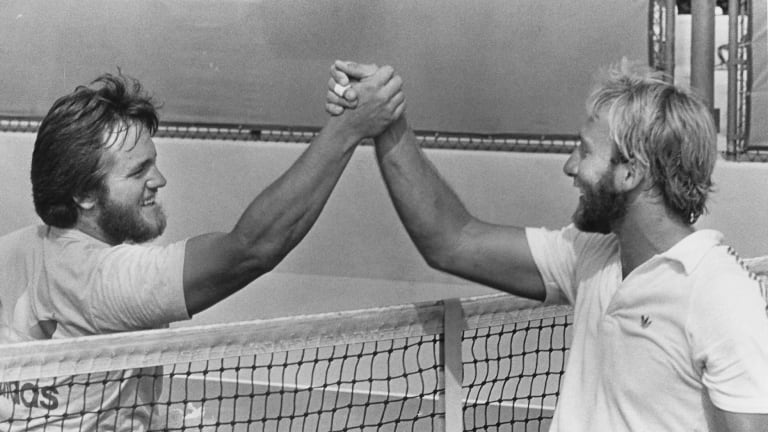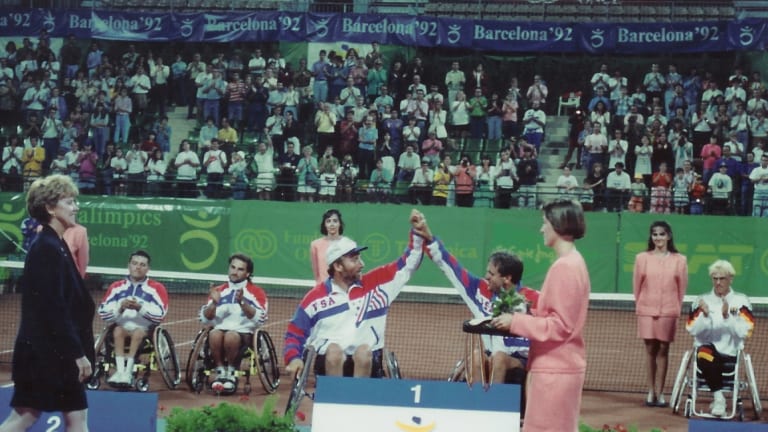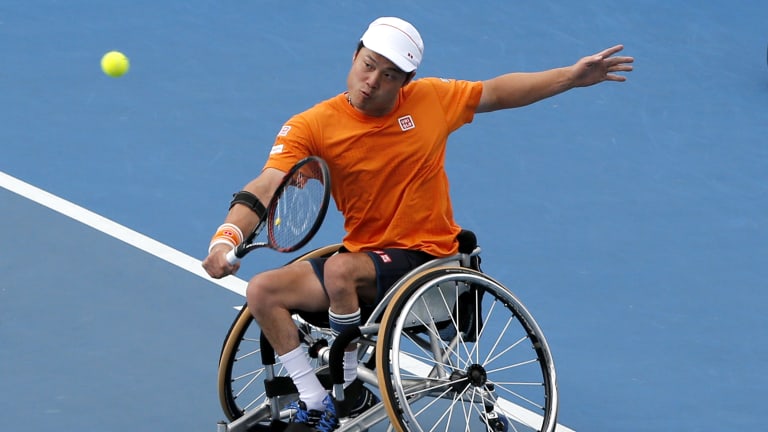In the annals of wheelchair sport, that chance encounter was the equivalent of John Lennon meeting Paul McCartney or Steve Jobs hooking up with Steve Wozniak—creating an alchemy that changed things forever.
Minnebraker could not be reached for this story, but in the 1976 short film that profiles him, Get It Together, he describes his goal with his customized chair: “I just streamlined it as much as possible and looked at it as more of a sports car that would perform, something that would really function well. I wanted my chair to be something that would turn very, very quick.”
In the opening moments of the film, Minnebraker is seen wheeling and spinning in his chair at speeds that were unprecedented at the time. Another innovation he made was eliminating push handles from his wheelchair. “They weren’t needed,” Minnebraker says in the film. “Everybody is inbred in society so that wherever you go, people want to push you, and I don’t like that. I’m striving to be independent.”
Minnebraker and Parks became friends, and Parks would often visit Minnebraker in his Woodland Hills home. One day, he tried Minnebraker’s customized chair, and Minnebraker sat in his. “His chair didn’t have much of a back, and no armrests. When you saw Jeff in the chair, you only saw Jeff, with wheels,” says Parks. “I looked at him in my chair with the high back and I said ‘God you look so disabled. That must be how I look.’”
“I asked him if he’d make me a chair,” says Parks.
“No,” said Minnebraker. “But I’ll teach you to make your own.” Parks learned and eventually the two men, along with a few other wheelchair tennis players, went into business
manufacturing the chairs under the brand name Quadra.
In the ensuing years, Parks and other wheelchair tennis players, such as John Chambers, began organizing tournaments. In an age that predated the Internet and social media, not to mention fax machines, promoting the tournaments to a limited competitor base wasn’t easy. “We did the flier thing,” says Chambers, who became a leading figure in adaptive sports in Las Vegas. “We got the word out through the eight or nine community centers in Los Angeles.” As people began to hear about it, more and more players began showing up from farther and farther away.
In 1980, Parks, who had taken on a leadership role in the expansion of the sport (Minnebraker became less involved as the years ticked by), forged the National Foundation of Wheelchair Tennis along with fellow competitors David Kiley, David Saltz and Jim Worth. A year later, the Wheelchair Tennis Players Association was created.
The sport’s elders universally describe Parks as the man with the plan—the visionary who used his business savvy and organizational prowess to spread wheelchair tennis across the United States and overseas by organizing tournaments and clinics, and by roping in all-important sponsors.
If Minnebraker was wheelchair tennis’ engineer and early architect, and Parks its ambassador and rainmaker, then fellow player Randy Snow was its recruiter-in-chief. “Randy could go out and mingle, and he attracted people like the Pied Piper,” says Kiley. Snow, a Texan who became disabled in a farming accident, had an indefatigable drive and infectious personality. Parks would deliver people to clinics and Snow would rope them in and inspire them. Snow went on to become a world No. 1 wheelchair player and won 10 US Open singles titles between 1981 and 1993. He died of a heart attack at age 50 in 2009 while in El Salvador to conduct a tennis clinic. In 2012, he became the second wheelchair tennis player, after Parks, to be inducted into the International Tennis Hall of Fame.



